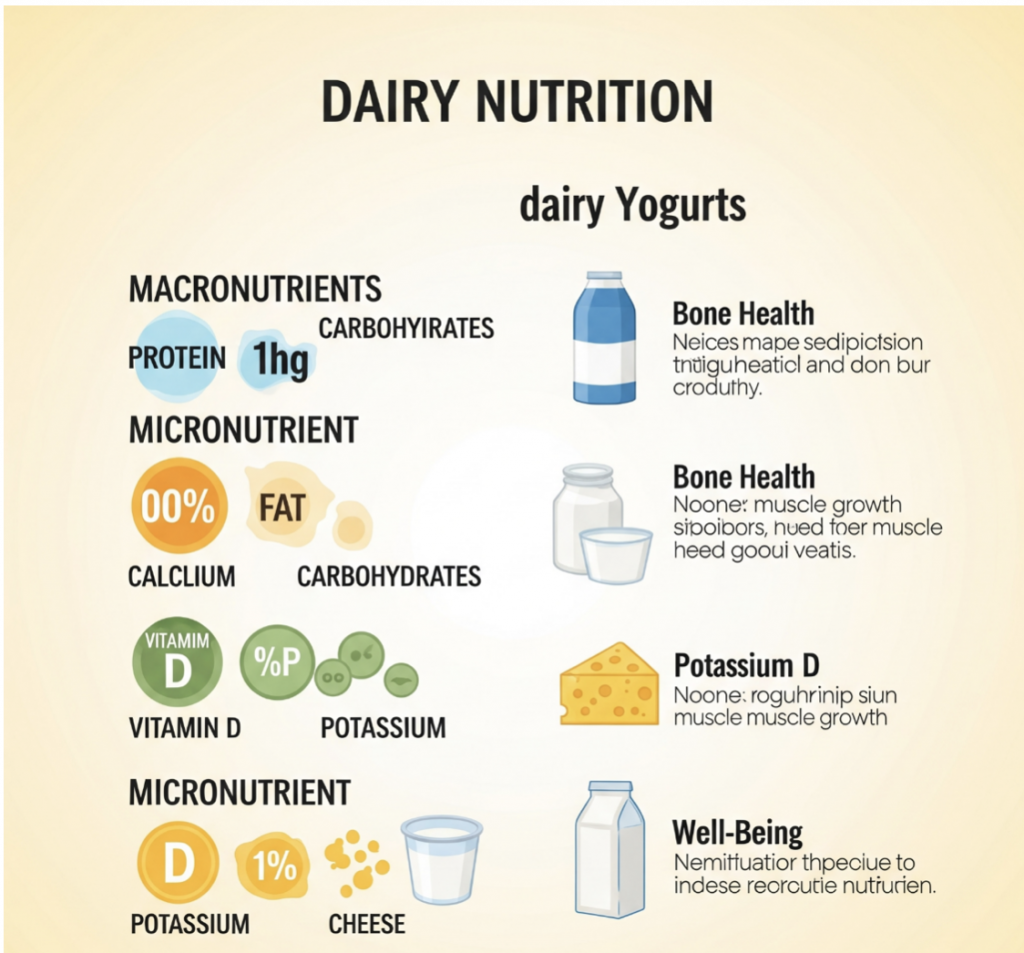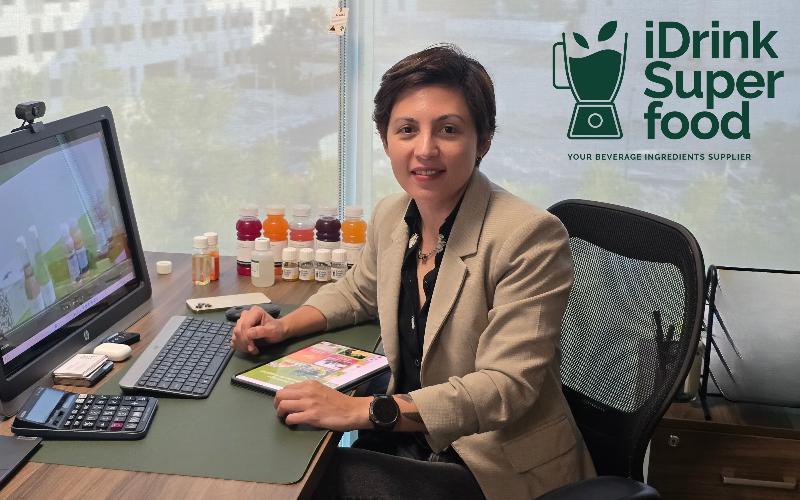Dairy Nutrition Market to Hit USD 120 Billion by 2032
The global dairy industry, once known for and characterized by its simplicity, is undergoing significant upheaval. Traditionally viewed as a basic staple in most diets, dairy products have evolved into sophisticated nutritional instruments addressing a wide range of health and wellness needs.

According to DataIntelo, the dairy nutrition market was valued at USD 70 billion, and it is projected to reach USD 120 billion by 2032, reflecting a compound annual growth rate (CAGR) of 6.4%. the market growth is not merely for the number watchers; it shows a shift in how dairy is produced, consumed, and perceived worldwide.
This repositioning of dairy from a traditional food component to a functional and fortified nutritional source is at the heart of the sector’s growth.
There has been a dramatic shift in consumer priorities over the years. Nutritional products are no longer expected to simply satiate – they’re not expected to promote long-term health and prevent chronic diseases. Dairy fits immaculately into this changing paradigm. Naturally rich in calcium, protein, and vitamin D, dairy is also enhanced with probiotics, omega-3 fatty acids, and plant-based components to meet consumer demands.
The rising prevalence of chronic lifestyle diseases globally – such as obesity, diabetes, and other heart-related conditions – has further fueled the demand for dairy options that promote proactive health. With digital access to health information at an all-time high, consumers are scrutinizing nutrition labels vigorously.
2. Technological Advancements
Contrary to expectations that dairy has reached maturity, the industry is undergoing somewhat of a renaissance powered by technology. Ultra-filtered milks, high-protein yogurts, and precision fermented cheeses exemplify the innovation sweeping through the landscape. Advancements in packaging technologies, such as tetra packs, are aimed at improving shelf life and reduce spoilage, especially in areas without established cold-chain structures.
3. Demand for Functional and Fortified Products
Functional and fortified dairy products are now commonplace. Yogurts enriched with gut-friendly bacterial cultures, milk infused with vitamins, cheese with omega-3s are essential products in retail stores worldwide. The appeal lies in their ability to offer “nutrition with purpose”, which aligns quite closely with consumer expectations for preventive and personalized health solutions.

From Staple to Functional
Historically, dairy products (particularly milk) were consumed for their macronutrient density and calcium content. However, the market today tells quite a different story. Modern consumers are health conscious, seeking products that not only nourish but also support specific health outcomes. Dairy has adapted accordingly, with innovations ranging from probiotic-enriched yogurts to omega-3 fortified cheese.
This repositioning of dairy from a traditional food component to a functional and fortified nutritional source is at the heart of the sector’s growth.
Key Growth Drivers
1. Rising Health ConsciousnessThere has been a dramatic shift in consumer priorities over the years. Nutritional products are no longer expected to simply satiate – they’re not expected to promote long-term health and prevent chronic diseases. Dairy fits immaculately into this changing paradigm. Naturally rich in calcium, protein, and vitamin D, dairy is also enhanced with probiotics, omega-3 fatty acids, and plant-based components to meet consumer demands.
The rising prevalence of chronic lifestyle diseases globally – such as obesity, diabetes, and other heart-related conditions – has further fueled the demand for dairy options that promote proactive health. With digital access to health information at an all-time high, consumers are scrutinizing nutrition labels vigorously.
2. Technological Advancements
Contrary to expectations that dairy has reached maturity, the industry is undergoing somewhat of a renaissance powered by technology. Ultra-filtered milks, high-protein yogurts, and precision fermented cheeses exemplify the innovation sweeping through the landscape. Advancements in packaging technologies, such as tetra packs, are aimed at improving shelf life and reduce spoilage, especially in areas without established cold-chain structures.
3. Demand for Functional and Fortified Products
Functional and fortified dairy products are now commonplace. Yogurts enriched with gut-friendly bacterial cultures, milk infused with vitamins, cheese with omega-3s are essential products in retail stores worldwide. The appeal lies in their ability to offer “nutrition with purpose”, which aligns quite closely with consumer expectations for preventive and personalized health solutions.
Geographical Expansion and Regional Demand
- Asia Pacific
- North America & Europe
- Latin America and Middle East & Africa
Category and Product Trends
- Milk
- Cheese
- Yogurt
- Butter
- Whey Protein and Specialty Dairy
Dairy in Health and Specialized Applications
- Infant Nutrition
- Sports and Active Lifestyle Nutrition
- Clinical Nutrition
- Culinary and Hybrid Applications
Evolving Distribution Channels
- Supermarkets & Hypermarkets: These stores continue to dominate due to their refrigeration capabilities, variety of produce offered – giving a complete one-stop shop experience.
- Convenience Stores: These shops play a crucial role in urban centers, especially for single-serve dairy items like yogurt, riding on the on-the-go culture prevalent in urban centers.
- Online Retail: The online retail model has seen a rise post-pandemic, emerging as a viable avenue. The rise of mobile-first consumers has accelerated the adoption of online grocery platforms like Amazon Fresh, Instacart, and Kroger.
- Specialty & Direct Sales Models: Organic shops, gourmet stores, and direct farm-to-customer platforms are garnering significant interest, particularly among premium and health-conscious consumer segments.
Form Factors and Innovation
Dairy’s form factor ties in directly to its usability and accessibility.- Liquid (milk, cream) remains the most widely consumed format globally.
- Powdered (milk and whey powder) serves regions and areas which lack cold-chain infrastructure and demand extended shelf life.
- Solid (cheese, butter) formats are expanding into artisanal and functional demographics.
Opportunities and Challenges
Key Opportunities- Next-generation product innovation, particularly in functional foods and personalized nutrition.
- Sustainability and traceability initiatives to build consumer trust and meet environmental sustainability goals set.
- Competition fr om plant-based alternatives, such as almond, soy, and oat-based products.
- Environmental concerns, including carbon emissions, water usage, and animal welfare.
- Price sensitivity and supply chain complexity, especially in underserved regions.
Leading Market Participants
The dairy nutrition market features a dynamic mix of established multinational corporations and emerging regional players. Some of the prominent companies are:- Nestle SA – Well known for R&D and scientifically backed dairy products.
- Danone SA – A pioneer in sustainable practices and plant-dairy hybrid solutions.
- Arla Foods – Strong foothold in Europe with a focus on organic dairy.
- FrieslandCampina – Leading producer of infant and functional dairy nutrition.
- Lactalis Group – Renowned for their diversified product portfolio.
- Dean Foods – Rooted in North American history, now making waves in clean-label and sustainable offerings.












